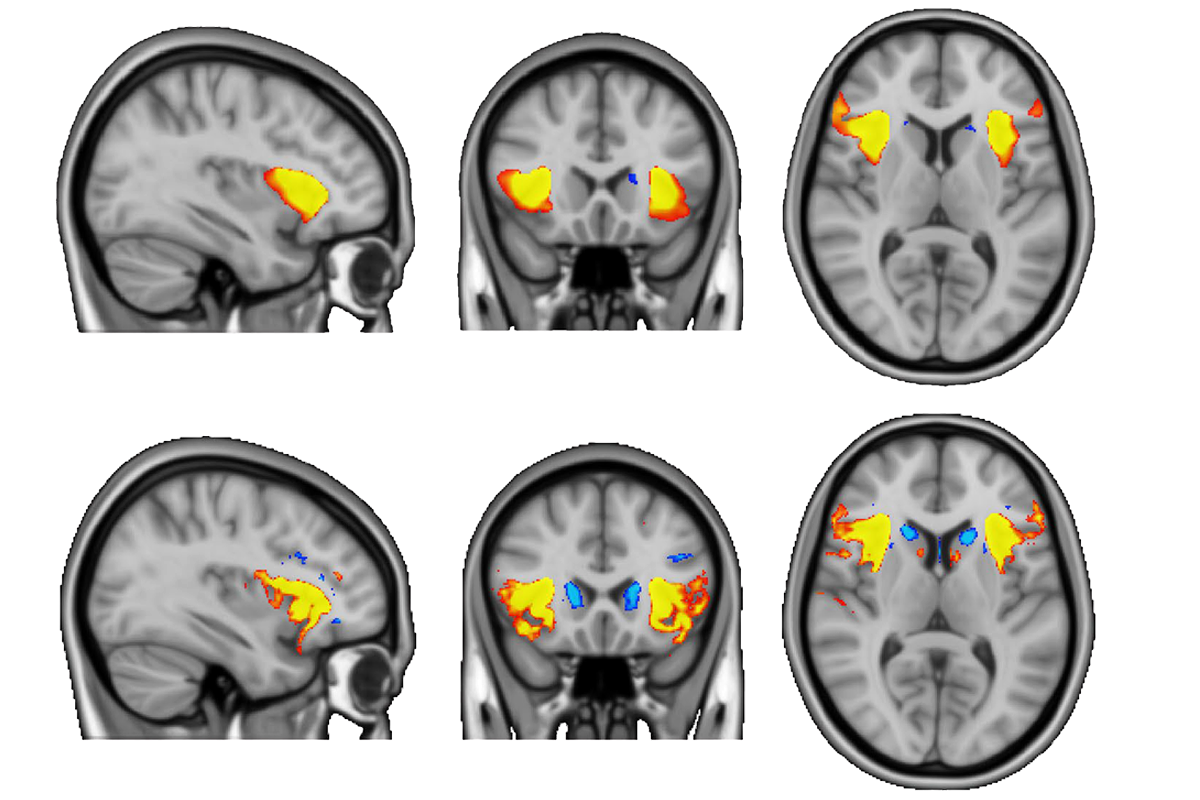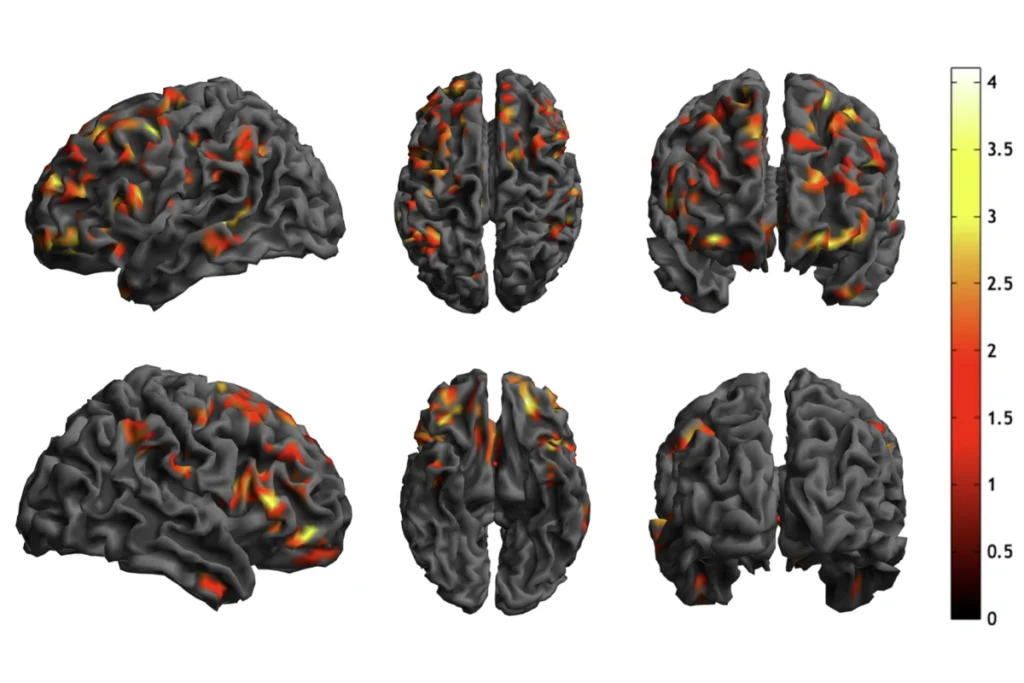- People with 3q29 deletion syndrome have behavioral and developmental issues and a higher likelihood of psychiatric diagnoses than those without the syndrome. Spectrum has previously reported that 3q29 deletion is associated with autism, especially in girls. Journal of Autism and Developmental Disorders
- A replication study in an independent cohort has found much more variability in site-specific gray-matter volume differences between autistic and non-autistic people than did the initial study. Molecular Autism
Gray-matter volume; 3q29 deletion syndrome; random eye movements
Here is a roundup of autism-related news and research spotted around the web for the week of 22 January.
By
Jill Adams
23 January 2024 | 2 min read

Location, location: A replication study found differing patterns in gray-matter volume in two cohorts of autistic people: ENIGMA (top row) and LEAP (bottom row).
- Single-nucleotide polymorphisms in the FOX2 and OXTR genes, which are linked to autism, are associated with altered social behaviors in bonobos, according to a preprint. bioRxiv
- Autistic children exhibit more random eye movements while watching movie clips than do non-autistic children. Autism Research
- The Hanna H. Gray Fellows Program, which supports postdoctoral scientists, is accepting applications through 28 February. Howard Hughes Medical Institute
- Of 64 children diagnosed with autism after screening, 76 percent demonstrated evidence of another neurodivergent condition, such as attention-deficit/hyperactivity disorder or a movement condition, but only 26 percent of those were evaluated further, according to a U.K.-based study. PLOS ONE
- A cohort of autistic people have variants of the X chromosome’s DDX53 gene, which has no functional ortholog in mice, according to a preprint. medRxiv
- The development of spinal sensory circuits influences whether altered responses to touch in autistic people emerge during embryonic growth or later in life. Nature Neuroscience
tags:
Recommended reading

Okur-Chung neurodevelopmental syndrome; excess CSF; autistic girls
By
Jill Adams
22 October 2024 | 2 min read

New catalog charts familial ties from autism to 90 other conditions
By
Charles Q. Choi
17 October 2024 | 4 min read
Explore more from The Transmitter

Karen Adolph explains how we develop our ability to move through the world
By
Paul Middlebrooks
25 October 2024 | 89 min listen

Microglia’s pruning function called into question
By
RJ Mackenzie
24 October 2024 | 9 min read

Early trajectory of Alzheimer’s tracked in single-cell brain atlases
By
Angie Voyles Askham
23 October 2024 | 8 min read
Cite this article:
